The Art Deco Design at Hotel Mediterraneo in Rome Is so Special, It's Protected by Italy's Ministry of Cultural Heritage

Just a few blocks from Roma Termini, the frenetic central train station in Rome's Esquilino district, you'll find one of the city's most important monuments to Art Deco hiding in plain sight.
Hotel Mediterraneo is the tallest building on the highest hill in central Rome, and it has a storied history. This 242-room hotel, the first building in Italy to have air-conditioning, was built in 1936 as part of the developments surrounding the 1942 World's Fair. (Needless to say, the country soon became preoccupied and the fair never happened.) Irving Berlin, filming This Is the Army in the area, was a notable early guest. Soon, the hotel would house Jewish citizens of Rome, sheltered by the Mediterraneo's anti-fascist owner Maurizio Bettoja. Later, German soldiers would occupy the hotel, and eventually, American GIs.
But part of what makes this hotel special is what lies within. It was designed by Mario Loreti, a noted figure of Italy's Art Deco period. The Mediterraneo's public spaces are filled with priceless mosaics, wood inlays, glasswork, and other pieces. Its distinctive design elements — including the cantilevered marble staircase, the first of its kind — continue to be models for architects and students of the movement.
Family-owned group Bettoja Hotels, which also runs the nearby Hotel Massimo d'Azeglio and Hotel Atlantico, undertook a $20-plus million renovation project that recently upgraded many of Mediterraneo's rooms and suites and refurbished its 1940s furniture. The art, of course, was left untouched, save for some necessary restoration work by specialized conservators. The building and the Art Deco treasures within have now officially been listed and protected by Italy's Ministry of Cultural Heritage.
Read on to learn more about some of these unique pieces.
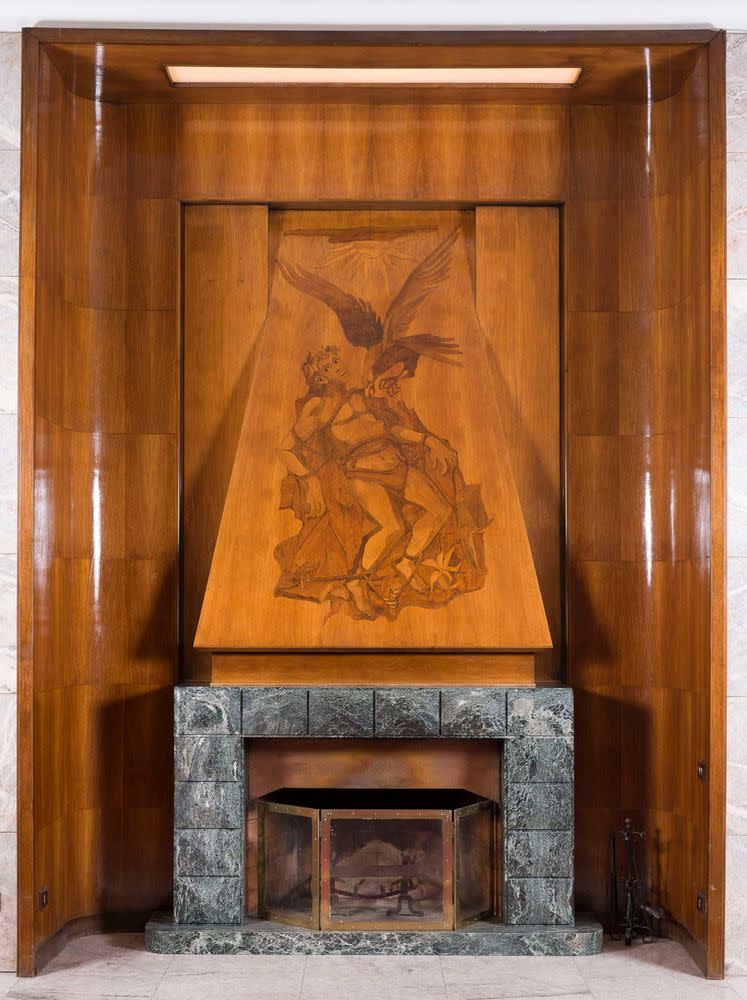
This fireplace detail, designed by Loreti and made by Achille Capizzano, depicts the punishment of Prometheus.
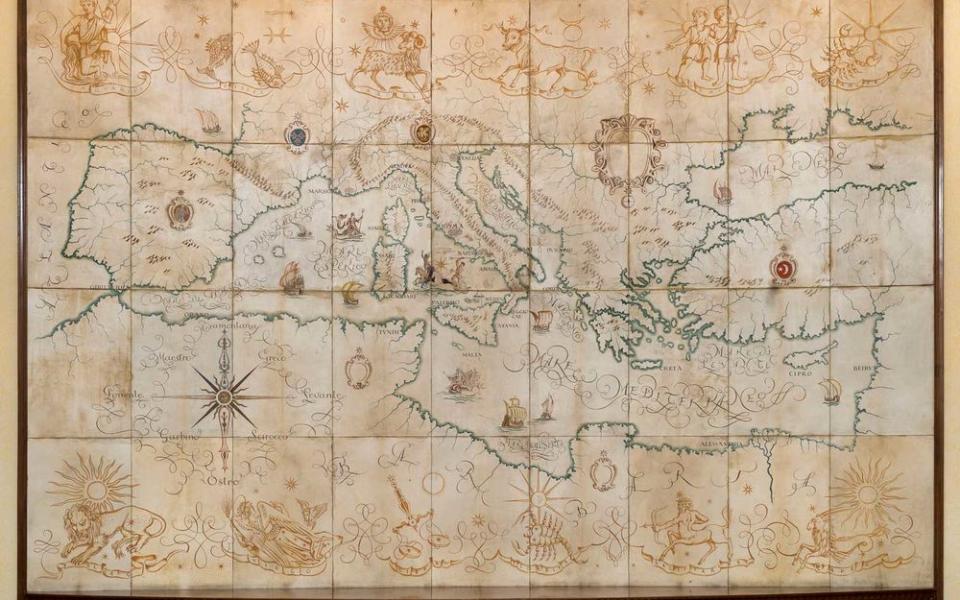
The hotel's Sala delle Mappe houses a large map of the Mediterranean Sea surrounded by the signs of the zodiac. Capizzano used tempera paint on parchment to create the map.
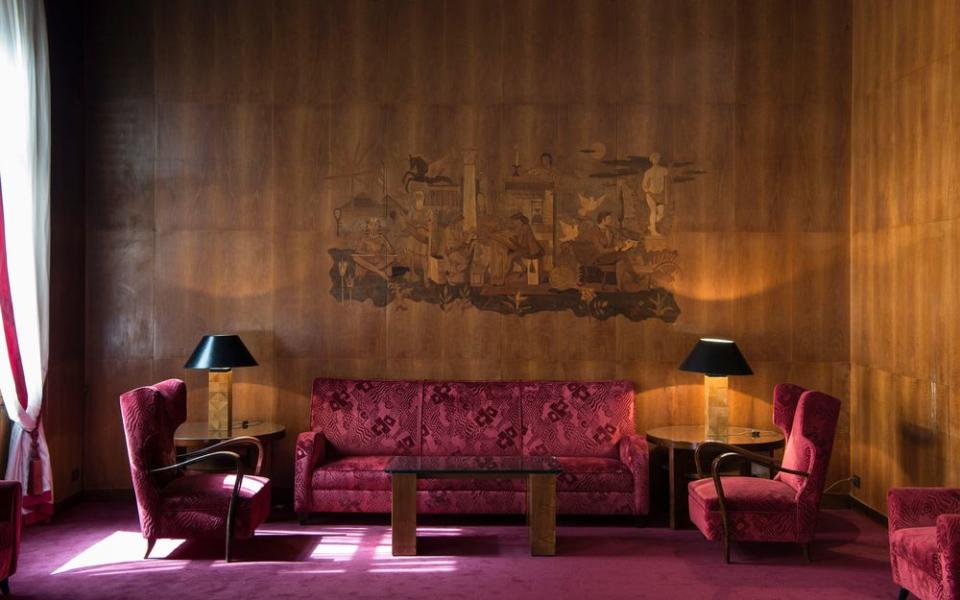
Across from the map is a piece titled The Allegory of the Scripture. This wood inlay, also by Capizzano, portrays the history of writing from ancient Egypt through the 20th century.
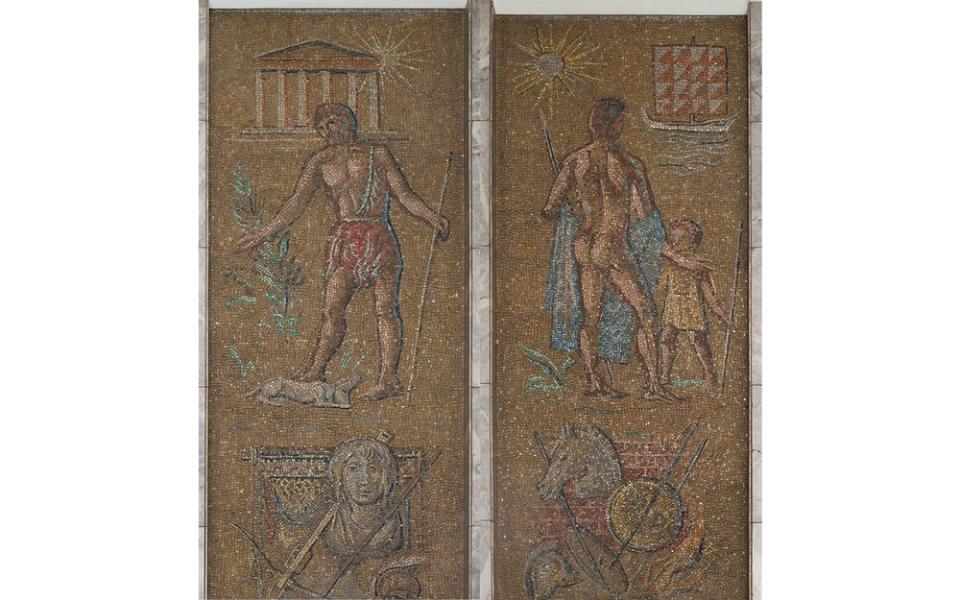
The Return of Ulysses and The Departure of Ulysses, mosaics designed by Capizzano and executed by Franco d’Urso, depict scenes from the life and voyage of Odysseus.
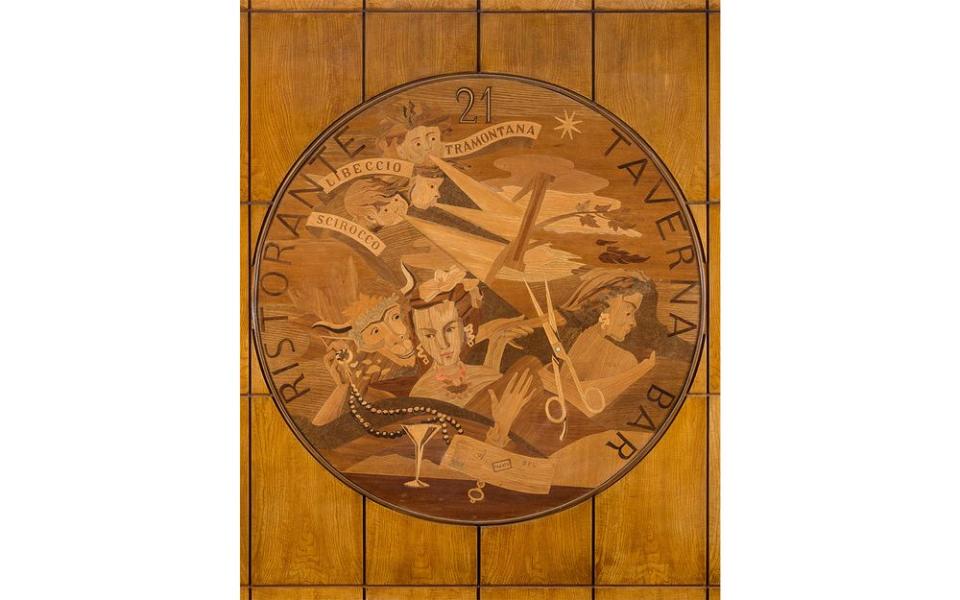
Rebus, a wood inlay by Capizzano and d'Urso. The riddle to which the title refers remains a mystery.
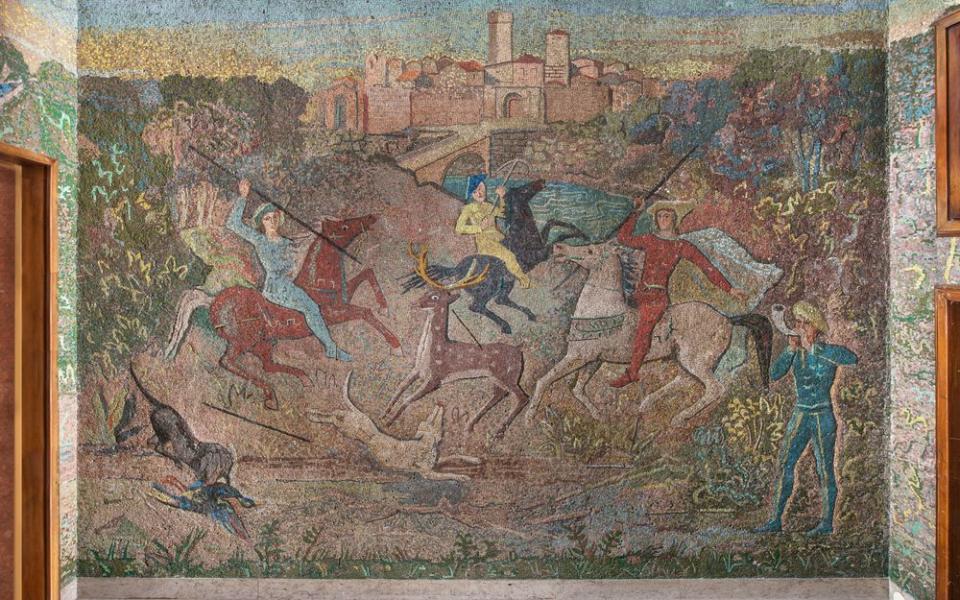
This mosaic in the dining room, also by Capizzano and d'Urso, shows a deer hunting scene.
Aside from the art on the walls, Hotel Mediterraneo is filled with Art Deco light fixtures, clocks, ceramics, and architectural elements from Italian designers such as Giò Ponti and Gustavo Pulitzer Finali.
To book, visit romehotelmediterraneo.it.

